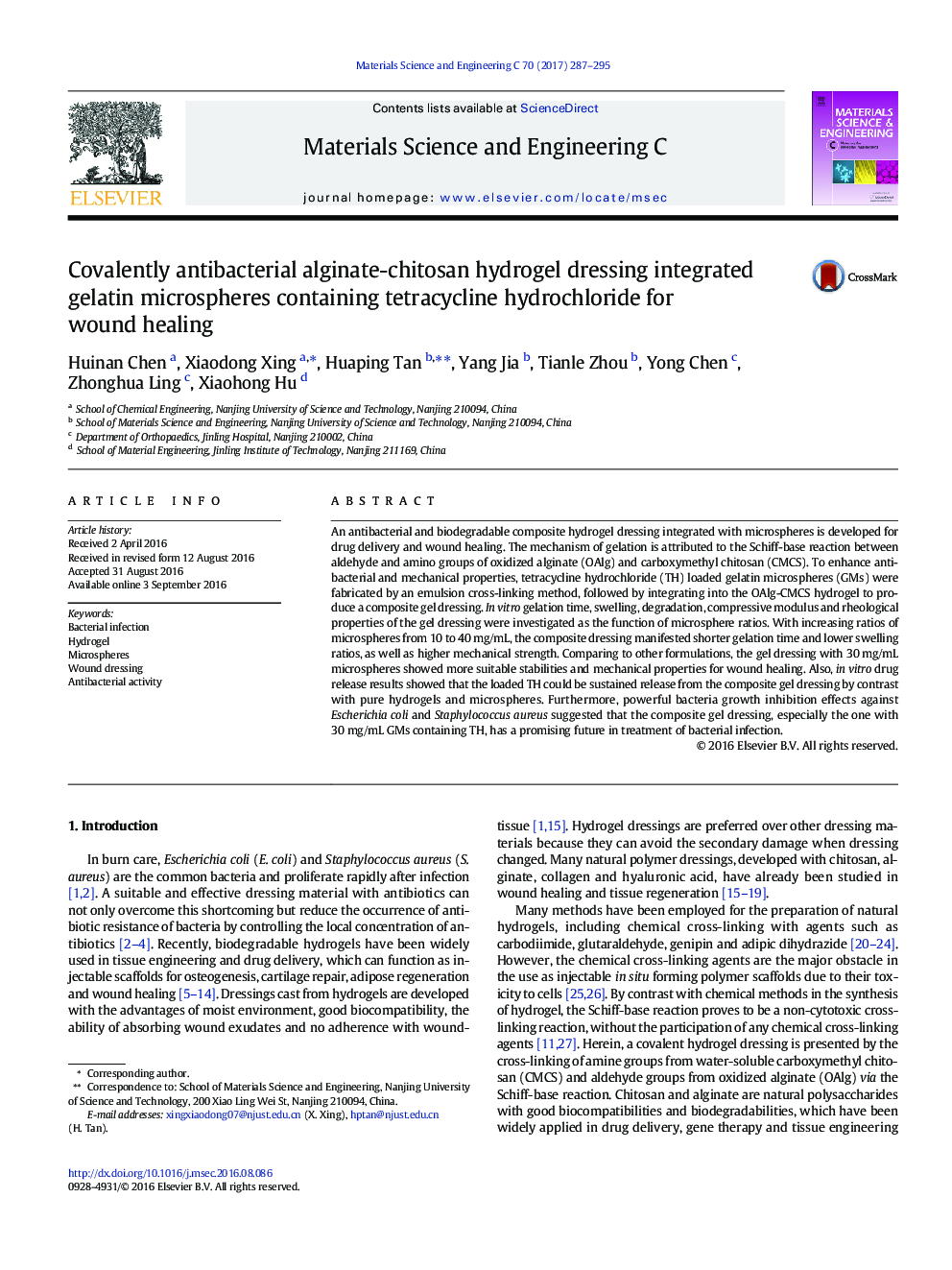| Article ID | Journal | Published Year | Pages | File Type |
|---|---|---|---|---|
| 6481368 | Materials Science and Engineering: C | 2017 | 9 Pages |
â¢Antibacterial alginate/chitosan hydrogel dressing integrated with gelatin microspheres was fabricated.â¢Drug loaded gelatin microspheres improved biodegradable and mechanical properties of the dressing.â¢The composite dressing showed antibacterial performance and bacterial growth inhibition effects.
An antibacterial and biodegradable composite hydrogel dressing integrated with microspheres is developed for drug delivery and wound healing. The mechanism of gelation is attributed to the Schiff-base reaction between aldehyde and amino groups of oxidized alginate (OAlg) and carboxymethyl chitosan (CMCS). To enhance antibacterial and mechanical properties, tetracycline hydrochloride (TH) loaded gelatin microspheres (GMs) were fabricated by an emulsion cross-linking method, followed by integrating into the OAlg-CMCS hydrogel to produce a composite gel dressing. In vitro gelation time, swelling, degradation, compressive modulus and rheological properties of the gel dressing were investigated as the function of microsphere ratios. With increasing ratios of microspheres from 10 to 40Â mg/mL, the composite dressing manifested shorter gelation time and lower swelling ratios, as well as higher mechanical strength. Comparing to other formulations, the gel dressing with 30Â mg/mL microspheres showed more suitable stabilities and mechanical properties for wound healing. Also, in vitro drug release results showed that the loaded TH could be sustained release from the composite gel dressing by contrast with pure hydrogels and microspheres. Furthermore, powerful bacteria growth inhibition effects against Escherichia coli and Staphylococcus aureus suggested that the composite gel dressing, especially the one with 30Â mg/mL GMs containing TH, has a promising future in treatment of bacterial infection.
